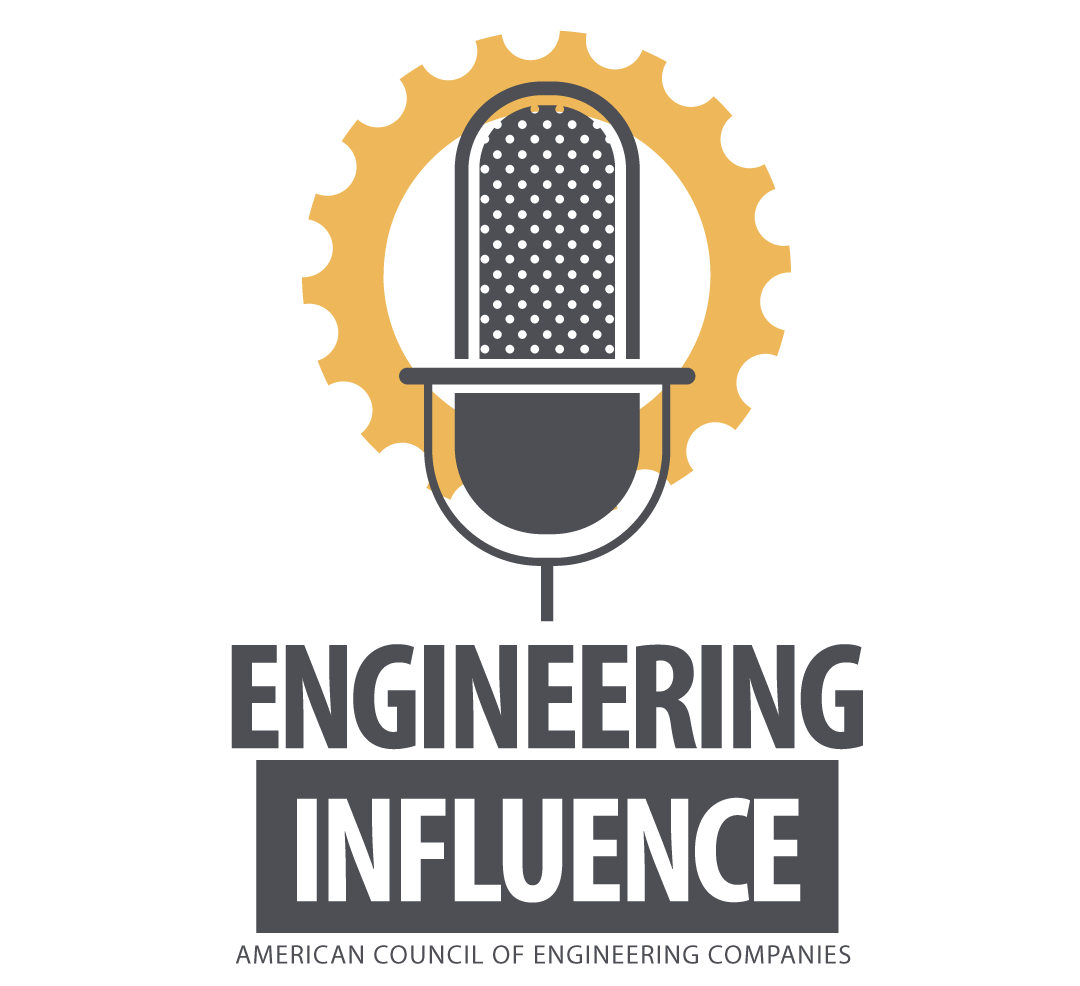
The Voice of the Business of Engineering
Engineering Influence is the official award-winning podcast of the American Council of Engineering Companies (ACEC).
ACEC is the trade association representing America's engineering firms; the businesses that design our built environment. Subscribe to the podcast for a variety of content ranging from interviews with newsmakers and elected officials to in-depth conversations on business trends, the economy, technology and what's next for the engineering and design services industry.
Visit us online at www.acec.org
Follow us on Twitter at @ACEC_National
ACEC reserves the right to moderate episodes on its channel and make editorial decisions on the inclusion or deletion of comments posted by listeners. Direct any questions to comms@acec.org.
Episodes

Tuesday Jun 01, 2021
Why Your Bonus Incentive Program Doesn't Work and How to Fix It!
Tuesday Jun 01, 2021
Tuesday Jun 01, 2021
Today we’re talking about incentive programs. They are a facet of the salary structure in almost every—or maybe even every—engineering firm, yet they are notoriously difficult to design and maintain. A survey by PSMJ found that 76 percent of employees at engineering firms said that their bonus program needed to be improved.
To get into this issue, we’re talking today with Ryan Jolley, who is an owner and Chief Strategy Officer of Jones & DeMille Engineering in Richfield, Utah. In 2017, he helped to develop a bonus program at the firm that led to a huge jump in profitability. Based on that success, the firm spun out the concept into a new software company, ourlinQ, of which Ryan serves as co-founder and CEO.
A couple of weeks ago, Ryan presented an ACEC online class, Everyone Hates Your Bonus Program – Here’s How to Fix It! and we’re going to delve into some of the issues that he raised.
Click here to download the On-Demand ACEC online class.
Click here to learn more about ourlinQ.

Friday May 28, 2021
The Government Affairs Update for May 28, 2021
Friday May 28, 2021
Friday May 28, 2021
Matt Reiffer joins the podcast to discuss the unanimous approval of the Surface Transportation Reauthorization Act of 2021 by the Senate Committee on Environment and Public Works earlier in the week.

Tuesday May 25, 2021
The Weekly Digest from ACEC
Tuesday May 25, 2021
Tuesday May 25, 2021
Welcome to the Weekly Digest, a round-up of what's happening this week at ACEC National. This week, we cover:
The Engineering Excellence Awards, taking place on June 17th. Register here.
ACEC's collaboration with Careers Building Communities.
Spotlight webinar: Guidelines for Handling a Cyber Security Breach on May 27th.
ACEC's Project Management 101 course, kicking off on July 13th is now open for registration.
The ACEC Research Institute is now holding its first-ever Annual Prize Drawing.
ACEC's letter of support for the Senate Surface Transportation Reauthorization Act of 2021

Friday May 21, 2021
Government Affairs Update for May 21 - Infrastructure Update
Friday May 21, 2021
Friday May 21, 2021
Matt Reiffer joined the program to update us on the current status of negotiations on an infrastructure package.

Wednesday May 19, 2021
Wednesday May 19, 2021
Infrastructure funding is the central issue on Capitol Hill right now, with the President and Congress negotiating to determine federal investment levels for the next several years.
In the transportation sector, however, states and local governments actually invest more in infrastructure annually than does the federal government—about $170 billion to $146 billion, according to the latest figures.
In recent years, many states have responded to the need for repair and expand their transportation infrastructure by raising user fees, usually the state gas tax. Since 2010, 37 states have raised their gas tax, with the latest coming last week, when Missouri passed legislation to raise its 17-cent-per-gallon gas tax by 12.5 cents over the next five years.
Morgan Mundell, executive director of ACEC Missouri, came onto the program to talk about the campaign to win the gas tax increase.

Monday May 17, 2021
The Private Markets Update with Erin McLaughlin
Monday May 17, 2021
Monday May 17, 2021
ACEC welcomes Erin McLaughlin for a Private Markets Update for May, 2021.

Friday May 14, 2021
Government Affairs Update for May 14, 2021
Friday May 14, 2021
Friday May 14, 2021
On today's update, we welcome Dan Hilton from the advocacy team onto the program to talk about ACEC's international work with FIDIC and the new Memorandum of Understanding signed between ACEC, ACEC Canada and CNEC in Mexico. More information about the MOU can be found here.

Friday May 14, 2021
Duty to Defend: What You Need to Know to Protect Your Firm
Friday May 14, 2021
Friday May 14, 2021
Today on the Engineering Influence podcast, we’re going to talk about Duty to Defend. That might seem like a dry topic, but it can have a catastrophic impact on a firm if it isn’t handled properly.
In the driest of terms, Duty to Defend is A contractual obligation whereby one party, in this instance, the design professional, agrees to defend another party, generally an owner or developer against a covered third-party claim, thus incurring attorney's fees and costs.
To bring this issue to life and dive deep into the implications for engineering firms, Brett Stewart, who is the Risk Manager for the Design Professional unit of AXA XL, has joined us on the show.
Click here to download AXA XL's chapter on indemnity, which provides additional information on this issue.





